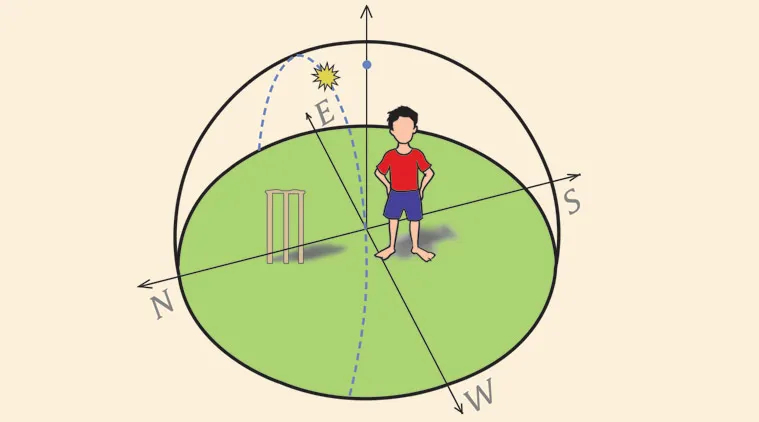Zero Shadow Day

- 22 Apr 2024
Why is it in the News?
A group of students was provided a first-hand experience of the Zero Shadow Day (ZSD) phenomenon at an event organized by the Pondicherry Science Forum (PSF).
What is Zero Shadow Day?
- Zero Shadow Day occurs twice every year in locations between the Tropics of Cancer and Capricorn, where the Sun is positioned directly overhead at noon.
- The shadow typically appears elongated on the ground while being observed under normal circumstances.
- However, when the shadow perfectly aligns under the object, during a short period of time, it remains absent on the ground.
- This happens when the sun reaches the zenith, its highest point of revolution.
- The dates of the occurrence may vary depending on the specific location and its latitude.
Why does Zero Shadow Day occur?
- Zero Shadow Day is caused due to Earth's axial tilt of approximately 23.5 degrees and its orbit around the Sun.
- The Sun is never overhead causing it to maintain a slightly lower altitude either north or south.
- The tilting position is also responsible for different seasons on Earth.
- As the Earth orbits the sun, the angle at which the sun's rays hit the Earth's surface changes, causing shadows to be cast in different directions.
- In regions falling between the Tropic of Cancer (about 23.5 degrees north of the equator) and the Tropic of Capricorn (about 23.5 degrees south of the equator), there are instances when the Sun is exactly overhead.
- Since the sun's rays come down almost vertically, there is no or little shadow on vertical objects.
